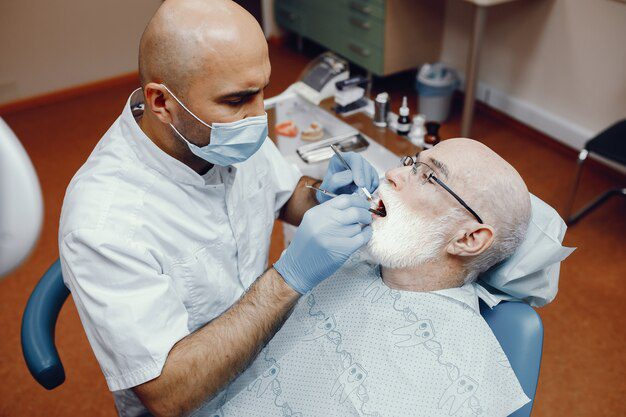This content is for informational and educational purposes only. Always consult a qualified healthcare provider.
Last Updated on February 3, 2024 by Grace Oluchi
Frenectomy is a procedure involving the removal or modification of a frenulum, a binding tissue on the body that connects two structures.
An oral frenectomy is a surgical procedure performed to remove or reposition a muscle attachment that is causing you to have, either a return in the space between your teeth or is causing a pull on the gum tissue, that will further a gingival recession or periodontal pocket.
Frenectomy procedures are quite common, especially during the infant stage of life. Genital frenectomies, such as circumcision, for example, happen frequently in the United States.
I’ll be sharing all important information concerning oral frenectomies.
📋 Table of Contents
Lingual frenectomy
The lingual frenum connects your tongue to your mouth. Try and touch the roof of your mouth, you’ll probably be able to feel the lingual frenum stretching underneath your tongue. Every person has a different length. Some people are born with a very short lingual frenum. And it can restrict the movement of the tongue. This condition is called ankyloglossia, or “tongue tie”. It occurs in nearly 5 percent of infants. And it’s more common in boys than girls.
Some common reasons for a lingual frenectomy
Improving speech: A tight lingual frenulum can sometimes make it not very easy to talk, especially in children.
Aid breastfeeding: In infants, tongue tie or ankyloglossia, can interfere with the ability of a baby to breastfeed.
Parents are advised to let their infants undergo this procedure, to give the tongue a greater range of motion and help with speech development.
Maxillary frenectomy
The labial frenectomy Involves the removal or modification of the tissue connecting the upper lip to the gum. If this frenum is shorter than average, it can make speech development difficult. This condition is a type of lip adhesion. A lip adhesion can also interfere with dental development and make it hard to fully clean the gums and front teeth. This raises the risk of gum disease and other dental complications. And in this case, a frenectomy procedure may be the best treatment option.
Some reasons maxillary frenectomy may be required include:
- improving oral function
- reduce tension in the frenulum
- facilitate orthodontic treatments
You’ll also find articles like this interesting and helpful:
Difference between scaling and root planing
Here’s a step-by-step guide on how a frenectomy procedure will go.
Most frenectomy procedures don’t have too much prep involved. Here is how it usually goes:
1 . After finishing a consultation with your doctor or pediatrician, the person in need of a frenectomy procedure will need to be secured while lying face up. You’re going to want to hold your child during the procedure.
2 . Your doctor will administer local anesthesia to numb the area where the procedure will take place. In more complex or sensitive procedures, sedation or general anesthesia may be used by your doctor.
3 . Then your doctor will swiftly snip the frenum using a scalpel, surgical scissors, or a cauterizing instrument.
4 . If the lip tie is severe or more complicated, there will be a need for the incision to be closed with stitches. And most especially if the frenulum removal involves a larger area.
5 . The entire procedure wouldn’t be too long and would likely be around 15 minutes or less from start to finish.
Laser frenectomy and oral frenectomy (what is the difference)
There isn’t much difference between them as both require the same type of procedure. The only little difference is one of them makes use of a laser. Which minimizes the risk of infection and blood loss. You’re basically good to go with any procedure you choose.
Frenectomy in infants


A lip tie and tongue tie are conditions that usually affect infants. Babies who have these issues sometimes find it hard to feed from their mothers. Breastfeeding can be very difficult for them. Because it’ll cause a limitation and can interfere with your baby’s ability to latch onto the breast properly, and your baby may struggle to extract milk effectively.
And if this continues it can slowly result in slow weight gain or weight loss in the baby due to your baby not feeding well. You may also experience more pain during feeding. Which is you should consult with a doctor or pediatrician if suspect your baby has a tongue tie and is experiencing difficulties with breastfeeding. The doctor or pediatrician can assess the situation, provide guidance on feeding techniques, and determine if a tongue tie release procedure is necessary to improve breastfeeding outcomes.
Will tongue tie and lip tie cause pain for my baby?
Tongue tie or ankyloglossia itself, typically doesn’t cause pain for babies. However, it can lead to difficulties with breastfeeding, which may cause discomfort for both the baby and you the parent. When your baby doesn’t feed well or feels hungry even after feeding because of this condition, it can cause your baby to become uneasy and cry more than usual because it’s not getting enough food. A healthcare provider or dentist can perform a frenectomy in an office setting. And the risk and complications are minimal.
Adult frenectomy


When a person grows older, their oral cavity changes significantly. If you have no problem talking, eating, and drinking, you may not need to treat a tongue or lip tie as an adult. However, a frenum could pull your gums away from the lower front teeth, leading to gum recession. It may even restrict your tongue’s mobility or your ability to move your lips. When this happens, you might need to undergo surgery to remove the frenulum. The surgical removal of the frenulum from an adult could possibly take more recovery time, than that of a baby’s.
An estimate of the cost of the removal of the frenulum in 2024
In most events, insurance will cover the cost. As long as you and your baby have a referral from a licensed practitioner. The procedure will likely only cost you a copay amount. However, in a case where you have no insurance, it may cost you anywhere between $800 to $8000.
Overall, you should keep in mind that prices vary widely. Because medical treatment costs, including frenectomy, can vary based on factors such as location, healthcare provider, and conditions. And also, medical procedure costs are subject to change over time, because they are influenced by various factors, including geographic location, the specific type of procedure, and the healthcare facility. To get a more accurate cost it’s best to visit a local healthcare provider, dental clinics, or oral surgeons. They will be able to give you a more up-to-date cost of everything.
The Best Recovery Steps For You
Recovery is quite straightforward. You will need to keep the area clean, which is very achievable for infants. For adults, you may need to put in more effort to speed up the recovery and avoid infection. Here are some tips to get well faster:
Practice oral hygiene
Apply care whenever you’re cleaning your teeth. Gentle oral hygiene practices are essential to prevent infection. However, you mustn’t disturb the surgical site directly such as brushing, it’s very important that you avoid the site. Rinsing the mouth with warm salt water may be recommended to keep the area clean.
Watch the food you eat
It’s best to eat soft or liquid foods, they may be your best option to avoid irritating to the surgical site. Try to also stay away from spicy or hot foods that could cause discomfort. By doing all this you’ll heal faster, and before you know it you’ll be back to eating what you love.
Don’t skip appointments
Your doctor may set appointments to monitor the healing process. They will assess your recovery process and address any concerns or questions you might have. They may also offer some guidance to help you cope and recover faster. Skipping days to see your doctor is not advisable at all, especially after a surgical procedure, the visits can stop when they tell you it’s okay to.
Post- Surgical expectations
After a frenectomy procedure, it’s common to experience some discomfort, like swelling, and mild bleeding. However, your dentist may provide postoperative care instructions, including guidance on pain management and wound care. They’ll also give you pain management tips, or recommend over-the-counter pain relievers to manage any discomfort. Remember to always follow their instructions on medication use. Don’t do less or more, just stick to what they tell you and how they tell who uses the medication.
How Long Could It Take To Get Better After A Frenectomy Procedure
The exact timeframe to finish healing can vary, but it is generally a matter of weeks. You may initially feel discomfort and swelling, but they usually subside within the first week, however, the complete tissue healing may take longer. Most people can resume normal activities relatively quickly after the removal of the frenulum, but It’s advisable to avoid strenuous physical activity and heavy lifting during the initial recovery period.
You might even have a party to attend soon and wish you could get better before then. It may not be possible to do that, and you shouldn’t shake it off and go ahead, you might hurt yourself in the process.
That’s why you should visit your doctor to offer advice, in situations so they can tell you what’s best. Because regardless of whether you no longer feel pain or any other discomfort, it still may not be safe. It’s best to give yourself time to heal because there still will be more parties or events to attend in the future, so don’t fret, you’ll be okay soon!

